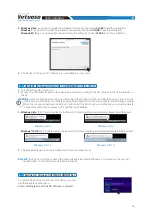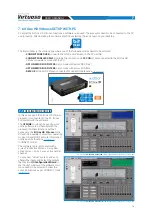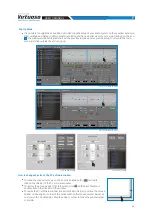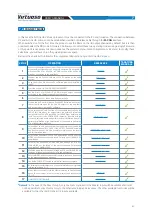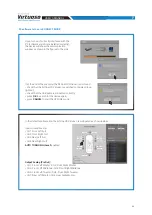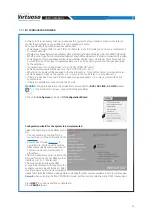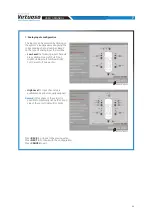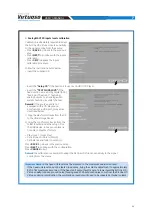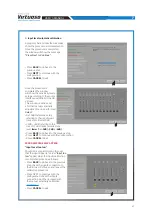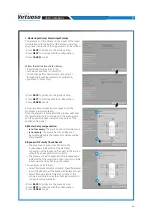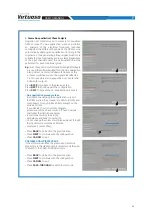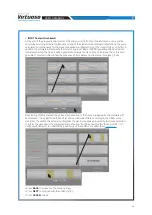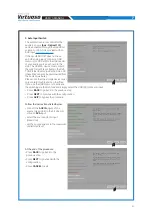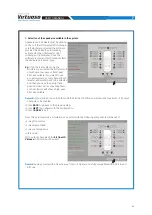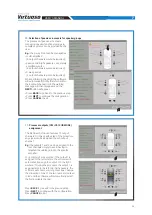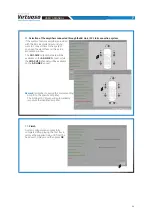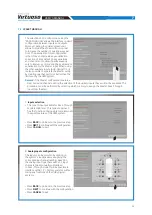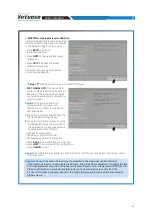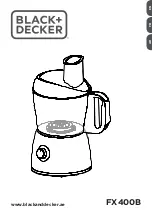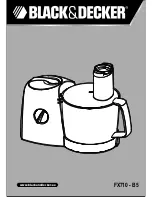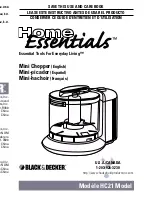
21
USER'S MANUAL
In this case the bit One HD Virtuoso processor must be connected to the PC and turned on. The connection between
PC and bit One HD Virtuoso can be established via USB or Wireless cable through the
W-CON
interface.
When switched on for the first time the product uses the filters on the IIR output channels by default, but it is then
possible to select the FIR mode. Firmware 2.0 allows you to select these two operating modes using a single Firmware.
At this point it is necessary to know in advance the system that you intend to implement, since later, to modify these
selections, you will have to run the guided procedure again.
Below is the check list to follow for the complete configuration of your bit One HD Virtuoso.
*
Remark:
in the case of the Pass through, only one memory linked to the Master input will be available and it will
not be possible to copy this memory to the other remaining and vice versa. The other available memories will be
available for the other AUX, Optical 1/2 inputs available.
SETUP
OPERATION
REFERENCE
TARATURA
MANUALE
1
Connect the Master inputs of the bit One HD Virtuoso to the outputs
of your audio system source. During this operation it is advisable to
disconnect the RCA / AD LINK - AC LINK sockets of the bit One HD
Virtuoso, connected to the amplifiers.
✓
2
Connect the bit One HD Virtuoso to the PC, switch on the audio
system.
✓
3
Open the bit One HD Virtuoso Pc software previously installed in
the PC.
✓
4
Start the config “I/O CONFIGURATION WIZARD”.
✓
5
Set the filters of all the bit One HD Virtuoso output channels
according to the characteristics of your speakers.
✓
6
Set the bit One HD Virtuoso time delays manually.
✓
7
Finalize the bit One HD Virtuoso. Exit the PC Software and turn off
the system. Reconnect the Bit One HD outputs to the amplifiers,
and restart the system and PC software.
✓
8
Select through the "solo" function all the speakers that make up the
FRONT Left, and adjust the output levels, the polarity. Perform this
operation for the FRONT Right, REAR Left, REAR Right. Enable via the
“solo” function only the SUBWOOFER channel(s), together with the
previously adjusted fronts and perform its level calibration, phase. To
perform a calibration of the output levels it is advisable to perform an
RTA of the system via bit Tune.
✓
9
Select Input eq and optimize the input equalization curve and the
possible presence of ALL PASS. If the DE-EQ / Phase Adjustement
has been carried out, it will be possible to intervene on the results
and further refine them.
✓
10
Select all the speakers of the FRONT and through an RTA and PINK
NOISE, set the output channels levels, Polarity and CHANNELS EQ
equalization.
✓
11
Select all the speakers of the REAR and through an RTA and
PINK NOISE, set the levels of the output channels, Polarity and
equalization CHANNELS EQ.
✓
12
Make the whole system play and through an RTA and PINK NOISE, set
the levels of the output channels, Polarity and equalization.
✓
13
Select MAIN EQ and set the desired frequency response, depending
on the preferred acoustic approach.
✓
14
Use the BASS BOOST function to set the low frequency response.
✓
15
By listening to your favorite music, you can further refine your system by
intervening at points 9 ÷ 13.
✓
16
*
Copy the current memory to the other memories to create starting
bases for other setups, or select a new memory and repeat points
10 ÷ 15.
✓
17
FINALIZE THE BIT ONE HD
✓
7.2
CONNECT MODE
7












